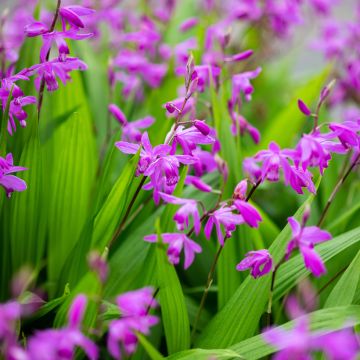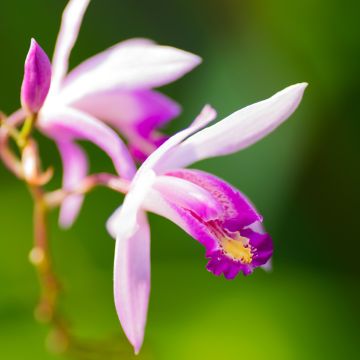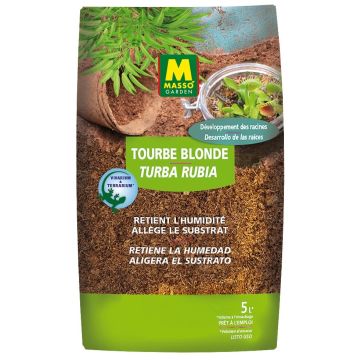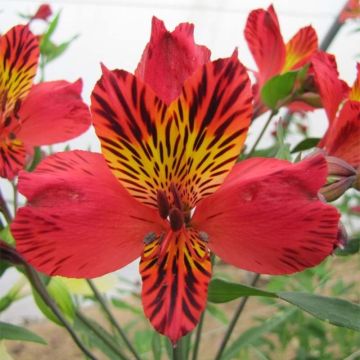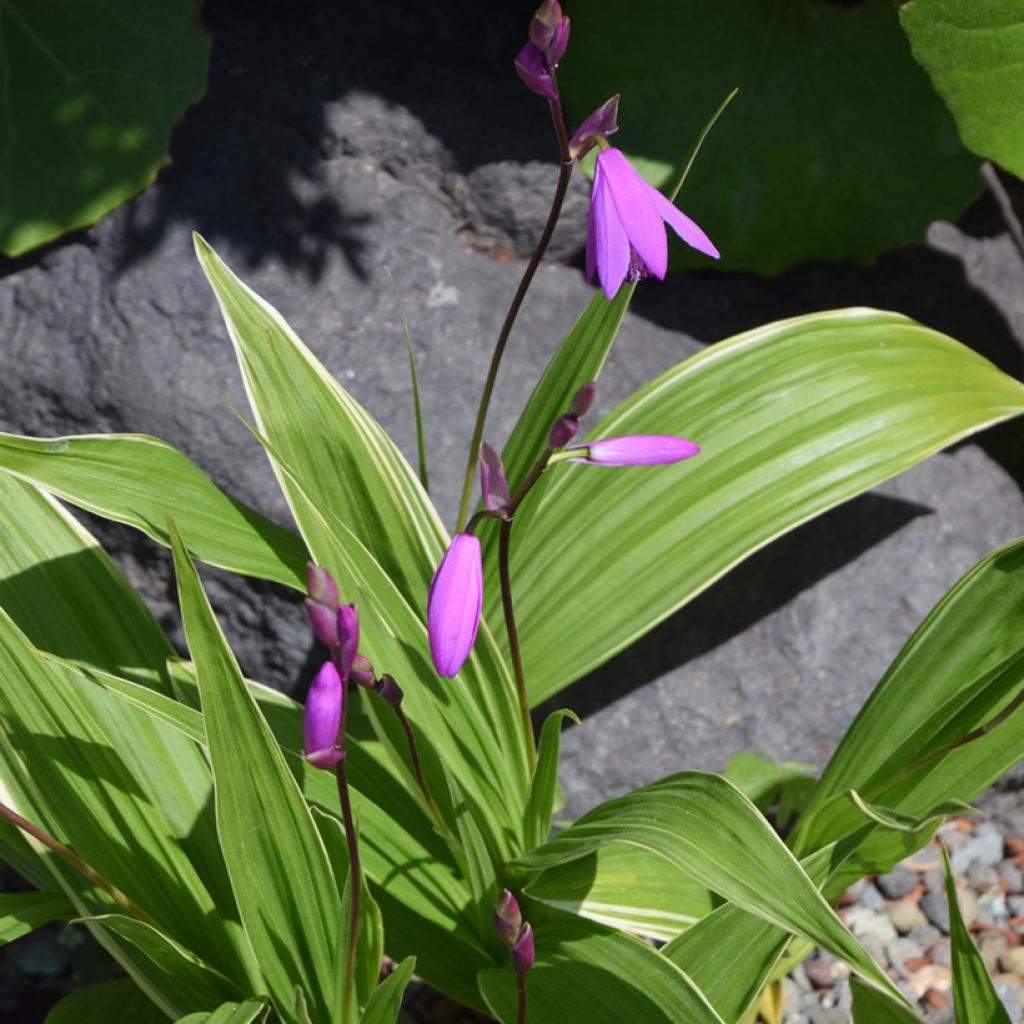

Bletilla variegated - Hyacinth Orchid


Bletilla variegated - Hyacinth Orchid
Bletilla variegated - Hyacinth Orchid
Bletilla striata Variegated
Hyacinth Orchid, Chinese Ground Orchid
Special offer!
Receive a €20 voucher for any order over €90 (excluding delivery costs, credit notes, and plastic-free options)!
1- Add your favorite plants to your cart.
2- Once you have reached €90, confirm your order (you can even choose the delivery date!).
3- As soon as your order is shipped, you will receive an email containing your voucher code, valid for 3 months (90 days).
Your voucher is unique and can only be used once, for any order with a minimum value of €20, excluding delivery costs.
Can be combined with other current offers, non-divisible and non-refundable.
Why not try an alternative variety in stock?
View all →This plant carries a 12 months recovery warranty
More information
We guarantee the quality of our plants for a full growing cycle, and will replace at our expense any plant that fails to recover under normal climatic and planting conditions.
Does this plant fit my garden?
Set up your Plantfit profile →
Description
Bletilla striata 'Variegated' is a variegated hyacinth orchid with cream-white foliage and mauve flowers. Rare in cultivation, this garden orchid is hardy and relatively easy to grow in partial shade, in well-drained soil. This elegant and colourful variety is delightful in borders and containers. Bletilla striata is known to be much less demanding than most garden orchids.
Bletilla striata 'Variegated' belongs to the Orchidaceae family. The species, with pink flowers and green foliage, is native to Asia, particularly China and Japan. It naturally occurs in moist meadows and clear forests. This garden orchid forms compact clumps thanks to its pseudobulbs, which produce new shoots every year. Its growth is moderate, with the plant reaching about 30-40 cm in height at maturity.
The flowers of 'Variegated' Bletilla appear between May and June, depending on the climate. They form elegant clusters at the top of slender, yet sturdy, green floral stems that emerge from the pseudobulb and dominate the foliage. The flowers are mauve with darker veins. They measure 3 to 5 cm in diameter. Their structure is typical of orchids, with three petals and three sepals, both groups often being similar in shape and colour. The labellum or modified central petal is particularly attractive in this orchid. It is wider and more ornamental than the other petals, with undulating white lines on a purple-violet background. The labellum also has a finely undulated edge. The leaves appear in early spring and disappear in autumn, or even during summer in dry climates. They are lanceolate, pleated, slightly arched, with prominent veins, measuring 35 cm long and 5 cm wide. In 'Variegated', they are striped with cream-white on a light green background. The sheath of the pseudobulbs is thin and smooth, ranging from light green to brownish. The plant spreads slowly, eventually forming a more or less sparse clump depending on the soil fertility. Robust, 'Variegated' Bletilla is hardy down to -15°C if the soil is sufficiently dry in winter. Full sun damages its foliage. In colder regions, it is advisable to mulch the base to protect it.
'Variegated' Bletilla can be planted in borders, rockeries, or grown in pots to decorate the patio or balcony, always in a non-burning exposure. In the garden, for example, it can be paired with Tricyrtis hirta (Japanese Toad Lily), with exotic star-shaped flowers, Epimedium rubrum (Barrenwort), with colourful foliage and graceful red flowers, and Brunnera macrophylla 'Jack Frost', with silver foliage.
Flowering
Foliage
Plant habit
Botanical data
Bletilla
striata
Variegated
Orchidaceae
Hyacinth Orchid, Chinese Ground Orchid
Cultivar or hybrid
Other Bletillas or Hyacinth Orchids
View all →Planting and care
Plant Bletilla 'Variegated' in a rich humus or potting soil, light, airy and well-draining. You can improve your garden soil by incorporating a soil mix for perennial plants. For optimal results, add 20% pumice, which will help maintain good moisture in summer while ensuring good drainage in winter. More than intense frost, it is excess water in winter that proves to be the main enemy of pseudobulbs. Bletilla can also be grown in pots. However, be sure to choose a container large enough, with a minimum diameter of 30 to 40 cm, to allow new shoots to develop on the periphery. Water regularly from April to September, then let your plants rest. In winter, in regions with very severe cold (-20°C), place your pots in a sheltered location that is cool (below 5°C) and bright.
Planting period
Intended location
Care
Planting & care advice
This item has not been reviewed yet - be the first to leave a review about it.
Similar products
Haven't found what you were looking for?
Hardiness is the lowest winter temperature a plant can endure without suffering serious damage or even dying. However, hardiness is affected by location (a sheltered area, such as a patio), protection (winter cover) and soil type (hardiness is improved by well-drained soil).

Photo Sharing Terms & Conditions
In order to encourage gardeners to interact and share their experiences, Promesse de fleurs offers various media enabling content to be uploaded onto its Site - in particular via the ‘Photo sharing’ module.
The User agrees to refrain from:
- Posting any content that is illegal, prejudicial, insulting, racist, inciteful to hatred, revisionist, contrary to public decency, that infringes on privacy or on the privacy rights of third parties, in particular the publicity rights of persons and goods, intellectual property rights, or the right to privacy.
- Submitting content on behalf of a third party;
- Impersonate the identity of a third party and/or publish any personal information about a third party;
In general, the User undertakes to refrain from any unethical behaviour.
All Content (in particular text, comments, files, images, photos, videos, creative works, etc.), which may be subject to property or intellectual property rights, image or other private rights, shall remain the property of the User, subject to the limited rights granted by the terms of the licence granted by Promesse de fleurs as stated below. Users are at liberty to publish or not to publish such Content on the Site, notably via the ‘Photo Sharing’ facility, and accept that this Content shall be made public and freely accessible, notably on the Internet.
Users further acknowledge, undertake to have ,and guarantee that they hold all necessary rights and permissions to publish such material on the Site, in particular with regard to the legislation in force pertaining to any privacy, property, intellectual property, image, or contractual rights, or rights of any other nature. By publishing such Content on the Site, Users acknowledge accepting full liability as publishers of the Content within the meaning of the law, and grant Promesse de fleurs, free of charge, an inclusive, worldwide licence for the said Content for the entire duration of its publication, including all reproduction, representation, up/downloading, displaying, performing, transmission, and storage rights.
Users also grant permission for their name to be linked to the Content and accept that this link may not always be made available.
By engaging in posting material, Users consent to their Content becoming automatically accessible on the Internet, in particular on other sites and/or blogs and/or web pages of the Promesse de fleurs site, including in particular social pages and the Promesse de fleurs catalogue.
Users may secure the removal of entrusted content free of charge by issuing a simple request via our contact form.
The flowering period indicated on our website applies to countries and regions located in USDA zone 8 (France, the United Kingdom, Ireland, the Netherlands, etc.)
It will vary according to where you live:
- In zones 9 to 10 (Italy, Spain, Greece, etc.), flowering will occur about 2 to 4 weeks earlier.
- In zones 6 to 7 (Germany, Poland, Slovenia, and lower mountainous regions), flowering will be delayed by 2 to 3 weeks.
- In zone 5 (Central Europe, Scandinavia), blooming will be delayed by 3 to 5 weeks.
In temperate climates, pruning of spring-flowering shrubs (forsythia, spireas, etc.) should be done just after flowering.
Pruning of summer-flowering shrubs (Indian Lilac, Perovskia, etc.) can be done in winter or spring.
In cold regions as well as with frost-sensitive plants, avoid pruning too early when severe frosts may still occur.
The planting period indicated on our website applies to countries and regions located in USDA zone 8 (France, United Kingdom, Ireland, Netherlands).
It will vary according to where you live:
- In Mediterranean zones (Marseille, Madrid, Milan, etc.), autumn and winter are the best planting periods.
- In continental zones (Strasbourg, Munich, Vienna, etc.), delay planting by 2 to 3 weeks in spring and bring it forward by 2 to 4 weeks in autumn.
- In mountainous regions (the Alps, Pyrenees, Carpathians, etc.), it is best to plant in late spring (May-June) or late summer (August-September).
The harvesting period indicated on our website applies to countries and regions in USDA zone 8 (France, England, Ireland, the Netherlands).
In colder areas (Scandinavia, Poland, Austria...) fruit and vegetable harvests are likely to be delayed by 3-4 weeks.
In warmer areas (Italy, Spain, Greece, etc.), harvesting will probably take place earlier, depending on weather conditions.
The sowing periods indicated on our website apply to countries and regions within USDA Zone 8 (France, UK, Ireland, Netherlands).
In colder areas (Scandinavia, Poland, Austria...), delay any outdoor sowing by 3-4 weeks, or sow under glass.
In warmer climes (Italy, Spain, Greece, etc.), bring outdoor sowing forward by a few weeks.

































